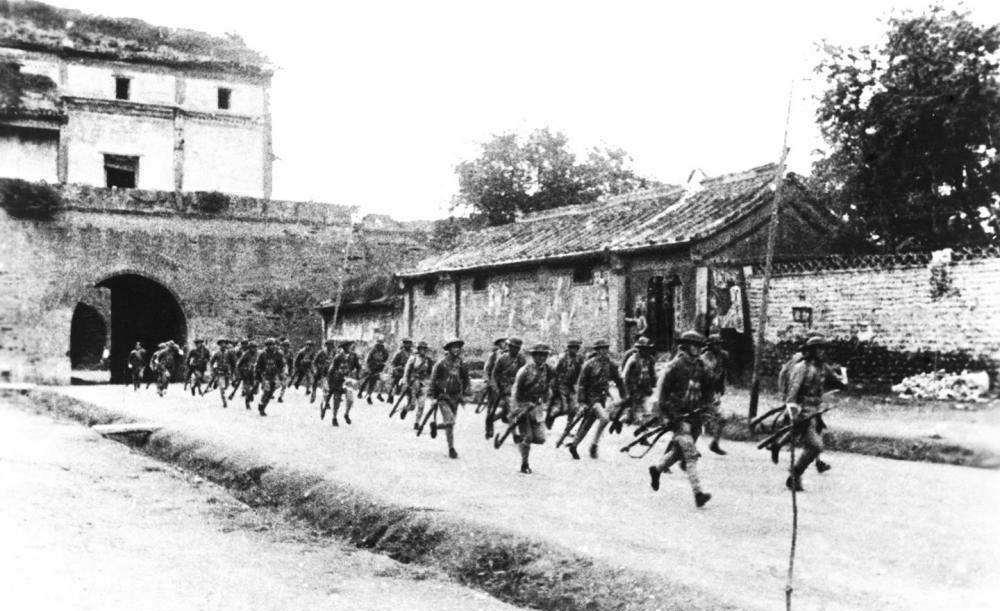On July 7, 1937, a unit of the Japanese North China Garrison Army launched the "Lugou Bridge Incident" under the pretext of the disappearance of soldiers during an exercise near the Lugou Bridge, and the all-people war of aggression against China broke out. At this critical moment of the life and death of the country and the nation, the Kuomintang and the Communists quickly reached cooperation, and the main force of the Chinese Workers' and Peasants' Red Army was reorganized into the Eighth Route Army of the National Revolutionary Army, and the guerrilla units of the Red Army, which persisted in guerrilla struggle in several southern provinces, were reorganized into the newly organized Fourth Army of the National Revolutionary Army, referred to as the "Eighth Route Army" and the "New Fourth Army" for short.

The Eighth Route Army was reorganized from the main forces of the Red Army such as the Red First, Red Second, and Red Fourth Fronts in the northwest and the Red Army in the northwest, with the main forces of the 115th Division, the 120th Division, the 129th Division and the Headquarters Special Service Regiment, of which the Red Army and the Seventy-fourth Division in Southern Shaanxi were reorganized into the 115th Division of the Eighth Route Army. On August 25, 1937, the 115th Division of the Eighth Route Army crossed the Yellow River in the east to the anti-Japanese front in North China after being formed in Yunyang, and on September 25, 1937, it ambushed the Japanese army at Pingxingguan and achieved the famous Pingxingguan Victory.
From June 1938 to the beginning of 1939, the main force of the 115th Division of the Eighth Route Army advanced into Shandong in batches, and together with the shandong column of the local Eighth Route Army in Shandong, it opened up and consolidated the anti-Japanese base area behind the enemy lines in Shandong, and the troops also developed rapidly.
The Second Column of the Eighth Route Army was established in February 1940 and consisted of the 344th Brigade, the Third Column of Youth Death, the Newly Organized First Brigade, and the First Brigade of the North China Anti-Japanese Nationalist Army, with Zuo Quan as commander and Huang Kecheng as political commissar. In April 1940, in order to strengthen the strength of the Jiluyu area, Huang Kecheng led the 344th Brigade of the Second Column of the Eighth Route Army and the First Brigade of the Anti-Japanese Nationalist Army in North China to the south, and merged with the Jiluyu Detachment led by Yang Dezhi of Jiluyu District to form the new Second Column of the Eighth Route Army. Yang Dezhi served as commander of the Second Column of the Eighth Route Army, Huang Kecheng as political commissar, and Commander of the Military Region was concurrently appointed by Huang Kecheng, and the column had jurisdiction over the newly organized Second Brigade, the newly organized Third Brigade, the 344th Brigade, the First Brigade of the North China Anti-Japanese Nationalist Army, and the Southward Detachment.
In late May 1940, Huang Kecheng led the 344th Brigade and the main force (5th Regiment and 6th Regiment) of the newly organized Second Brigade to the Yuwan Suzhou Border Region, and Yang Dezhi led the Second Column of the Eighth Route Army to leave the troops to persist in the struggle. In July 1941, the newly formed 3rd Brigade and the 4th Regiment of the newly organized 2nd Brigade were merged into the 7th Teaching Brigade, which was organized as the 115th Division and commanded by the 2nd Column of the Eighth Route Army. When the Seventh Brigade was established, the brigade commander was Han Xianchu, the political commissar and deputy brigade commander Zhao Jimei, and later Yu Keqin served as the brigade commander, and in December 1942, the Seventh Brigade was merged with the Seventh Military Subdistrict of the Jiluyu Military Region, and the name was abolished.
The 3rd Brigade of the 115th Division was organized by the Canal Detachment of the 343rd Brigade of the 115th Division and the Second Regiment of the Independent Detachment, with Yang Yong as the brigade commander and commander of the military region, Su Zhenhua as political commissar, and Wang Bingzhang, deputy brigade commander. In June 1941, the Third Brigade was assigned to the Second Column of the Eighth Route Army, and the Luxi Military Region was also incorporated into the Jiluyu Military Region, and in December 1942, the Third Brigade was merged with the Second Military Subdistrict of the Hebei Luyu Military Region, and the brigade commander was Wang Bingzhang when the third brigade was abolished.